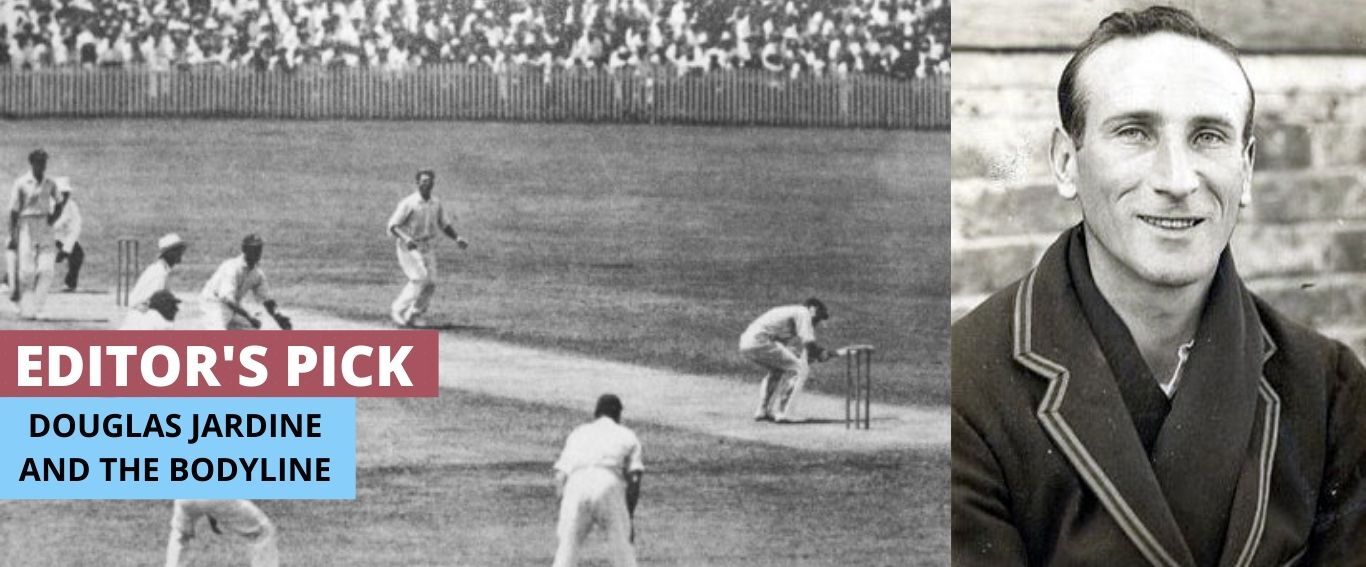Douglas Robert Jardine is batting genius of his generation, but he is remembered for all wrong reasons in cricket.
Douglas Robert Jardine is one of those cricketers that left a big mark on the history of the game, one that the current generation knows much about. Jardine was born on 23rd October 1900 in Bombay, Maharashtra. He was the son of former county cricketer Macolm Jardine. He played 22 Tests and 262 first-class games during 13 year long cricketing career. The Surrey batsman scored 1296 runs for England at an average of 48.00, involving ten fifties & a century. While he is largely known for his batting as he scored close to 15000 runs at the first-class level with 72 half-centuries and 35 centuries to his name, Jardine was also a handy leg-break bowler.
Jardine was most popularly known to pull off his stunt of bodyline against the mighty Australians during the Ashes in 1932-33. Bodyline bowling is a term in cricket that refers to short length bowling on the leg stump line into the batsman’s body with the leg-side field packed.
Jardine’s love and hate relationship against the Australians started back in the Ashes of 1928-29 when he toured with Marylebone Cricket Club (MCC). His time of glory came when he along with Wally Hammond stitched a third- wicket partnership of 262 runs against their arch-rivals in the fourth test of the series. He scored 98 runs of those. According to Douglas, the Australians intestinally kept him off-strike to make sure he loses concentration and doesn’t reach three figure mark. He also had some abusive banters with the crowd during that series.
During the 1932-33 Ashes, Douglas Jardine was appointed as the captain of England. Jardine knew Sir Don Bradman was going to cause a lot of problems for English bowlers, so he came up with a plan to cut down the average of the greatest batsman of all-time. Jardine brought-in some furious bowlers like Harold Larwood and Bill Voce to implement bodyline bowling.
The commands for the bowlers were quite simple. They had to bowl shorter delivery into the batsmen’s ribs. Jardine knew Bradman was vulnerable to deliveries that were short and aimed into his ribs. Jardine succeeded with his plans as England won the five-Test Ashes with a score-line of 4-1. Bradman was the highest scorer for Australia in that series. He scored 396 runs in four Tests with three half-centuries and a century. Still, it was an ordinary series by Bradman’s standards as the runs did not haunt the Britishers.
The former England captain was severely criticized for consistently implement bodyline bowling. It was an ethical move, but one that worked well for the English. He captained the English side the entire season and then led his side to a series win away in India.
The backlash of the bodyline bowling was still to come, and Jardine had to face its consequences. In 1934, Australians were supposed to tour England for the Ashes. The Australian board insisted that they would go ahead with tour if MCC guarantees them that, there would be no bodyline bowling.
MCC who had the fear of losing a fair share of money, so they quickly accepted the offer. Douglas Jardine had to leave the captaincy and later, end his career. Unfortunately, the most technically correct batsman who miles ahead of others in the judgment of lines and lengths is just remembered as the mastermind behind the negative bodyline bowling.

